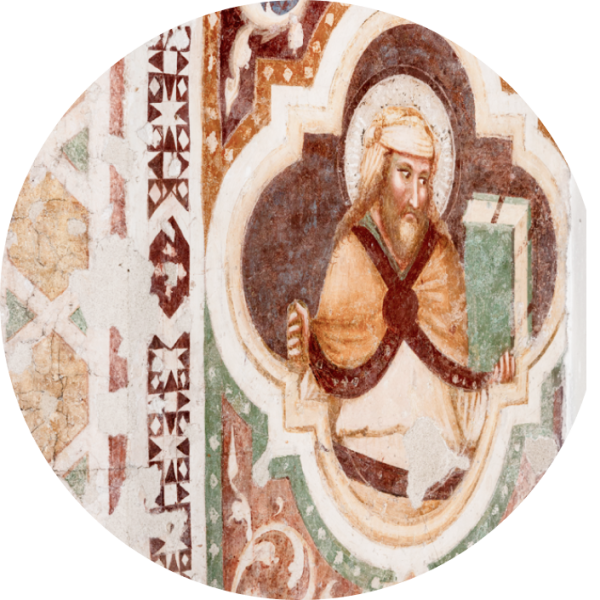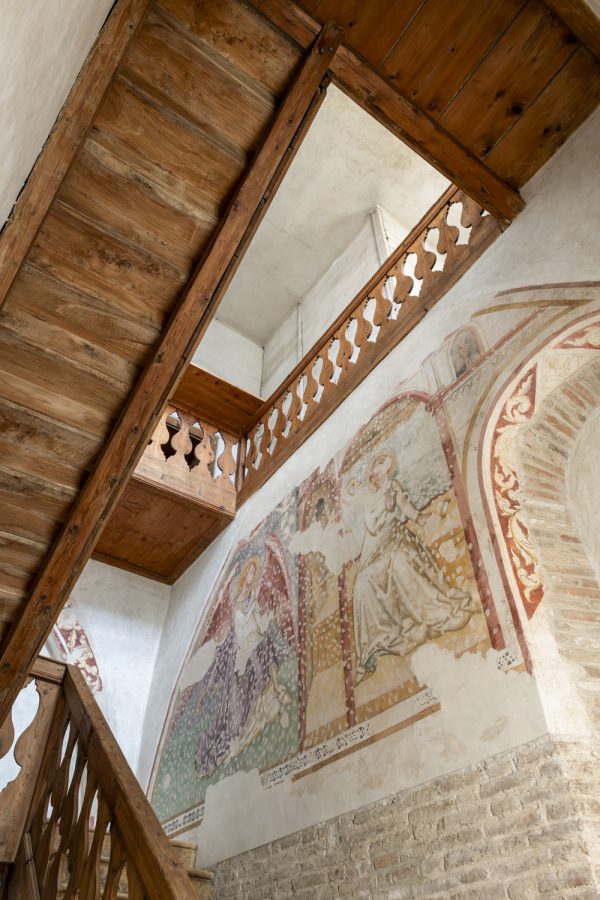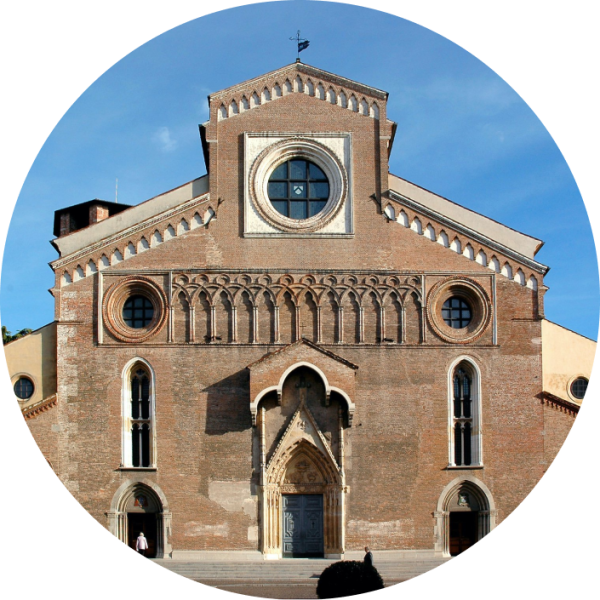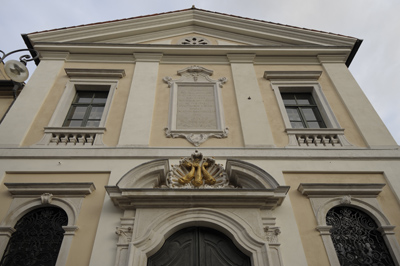The Friulian flag
The Museum of the Duomo of Udine houses the earliest and most widely recognised example of the flag of Friuli, which is the seventh oldest flag in Europe (14th century) and the most wellknown symbol of Friuli to this day. The flag is an impressive quadrangular piece of grey-azure (bright blue) silk cloth. A yellow bodied eagle with red claws and its head turned to the left is featured at the centre of the flag.
The origins of the flag of Friuli date back to the patriarchal state of Aquileia, also referred to as the patriarchal state of Friuli, which ruled the Patria del Friuli from 1077 to 1420 in the framework of the Holy Roman Empire. The flag was part of the funeral goods of patriarch Bertrand of Saint-Geniès, who was the patriarch of Aquileia from 1334 to 1350, when Friulian nobles conspired to brutally murder him. The museum contains another flag which was restored to its original form in 1999, as it was previously used to create a pair of episcopal buskins. As its size corresponds to the flag sewn on the gown of the
Blessed Bertrand, it is thought that they would make up a single two-sided flag.
Numismatic finds confirmed that an eagle was already the symbol of the patriarchal state of Friuli when Wolfger von Erla was patriarch of Aquileia, from 1204 to 1218.
The ancient flag displayed here provided the inspiration for the modern flag of Friuli, officially adopted and recognised by Regional Law 27/2001.
The Friulian flag is currently on display in public areas of the municipalities belonging to the Friulian language community next to the flags of Friuli-Venezia Giulia Autonomous Region, Italy, and the EU.
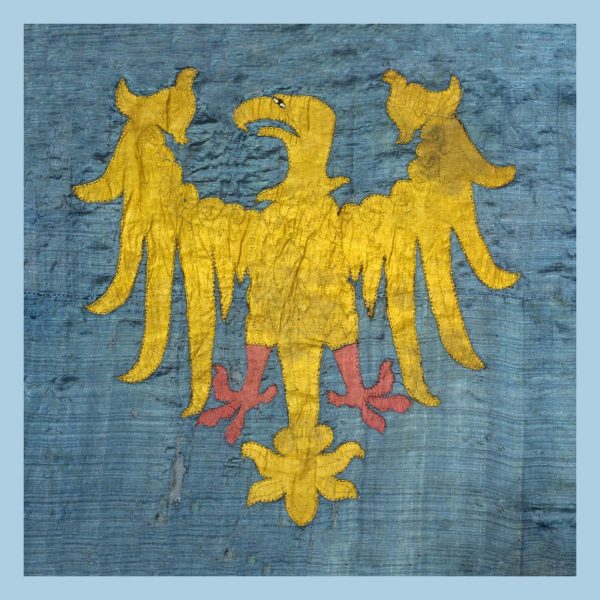

 English
English

